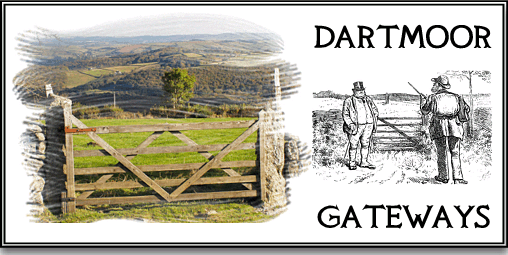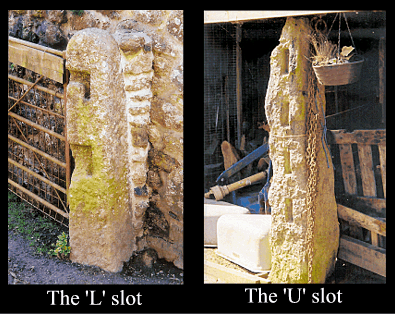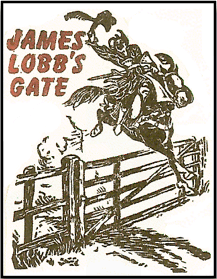
What on earth can there be of interest in the gateways of Dartmoor? Well if you ever closely examine a gateway it soon become apparent that there is an art in maintaining one. It is astonishing how farmers manage to hold together rotting wooden gates with strategically placed strands of bailer twine and wire. The amount of different latches is mind boggling and some of the modern ones need a degree in engineering just to work out how to open them. But there were and indeed are several types of gateways and the thing most of them have in common are the huge granite gateposts that stand either side of the entrance. Over the centuries many granite items, including antiquities, have been pressed into service as gateposts. But the old gateways of Dartmoor were built in a manner only seen elsewhere in Cornwall, The Isle of Purbeck in Dorset, and The Lake District.
Today things are relatively simple, two posts made of wood or metal, a standard gate, again either wooden or metal, two hinges, and a latch. But it did not always used to be that easy. The old form of gateway used to be made by erecting two granite pillars either side of the required entrance. Slots would then be cut into the pillars into which poles would be placed, usually the slots in one of the pillars would be deeper than the other in order to allow the pole to fit into the deepest ones prior to be placed into the shallower ones. The poles would then be secured in place with the use of wedges. There were two types of slots, the ‘L’ shaped slots which were in the shape of an inverted ‘L’ and only required the pole to follow the shape of the groove. The other type of slot was the ‘U’ shaped ones, with this the depth of the groove gradually got deeper and this method required for one of the posts to lean back creating a ‘wedge’ shape in order for the poles to sit securely.

Another type of gate hanger was the ‘woodenstone hanger’, this was where a large holed stone would hang over the edge of a wall and had an elongated upright from the gate slotted into the hole. The other end of the gate would then pivot on a metal spigot which was set into a small hole in either the ground or a convenient stone. This arrangement acted a both the hinge and the gate post and at one time was fairly common on the moors.
It is amazing where these old gate pillars crop up, I know one of the bedrooms of the Castle Inn at Lydford has one acting as a lintel over the fireplace. Others still support modern gates or they have become garden features.
Not only are there various types of gateways there are different types of gate insomuch as one finds the normal field gates but then there are the moor gates and hunting gates. The purpose of the moor gate was to keep any livestock on the commons and were placed on every drift road or where there was access to the moor. Today these have been by and large replaced by cattle grids but there still are a few of the old moor gates around which is great if you are the passenger on a wet day. A quick look on any map will soon reveal the existence of a moorgate from the numerous place-names like, Owley Gate, Saxon Gate, Abbot’s Gate, etc. I think my favourite is Dip Trough Gate, seems to trip of the tongue.
Hunting gates were placed in newtake walls and were used to allow huntsmen to pass through without having to leap the wall. These were normally just wide enough to allow one horse through at a time. There are still examples of hunting gates to be seen on the moor and again evidence of these can be seen in the place-names. Occasionally they are named after the person who built them such as James Lobb’s gate up near Crow tor. As with any feature of Dartmoor, somewhere there will be an associated letterbox, James Lobb’s gate being no exception:

In the days when horses were used to pull carts etc there always used to be some sport to be had when novice drivers were handling them. One old harvest custom was that the first woman to steer a loaded cart through a gateway without hitting either posts would be crowned ‘Queen of the Harvest’. So if anybody thinks that the ‘woman driver’ taunts of today are a modern thing forget it. There is also an old saying that you should never pass an open gate, or in other words explore every opportunity. The saddest memory of gates I shall ever have was to see the “No Entry – Foot and Mouth,” signs nailed to every gate during the 2001 outbreak.
Oh, and one last thing about gates, if ever you have to climb over one never climb in the middle of a gate, always get over the edge nearest the hangers. That way it puts less strain on both the actual gate and the hinges and they last a lot longer – the average price of a galvanised five bar gate is around £50 which equated to a farmer getting about £1 a kilo for lamb means he wants that gate to hang as long as possible.
 Legendary Dartmoor The many aspects past and present of Dartmoor
Legendary Dartmoor The many aspects past and present of Dartmoor
